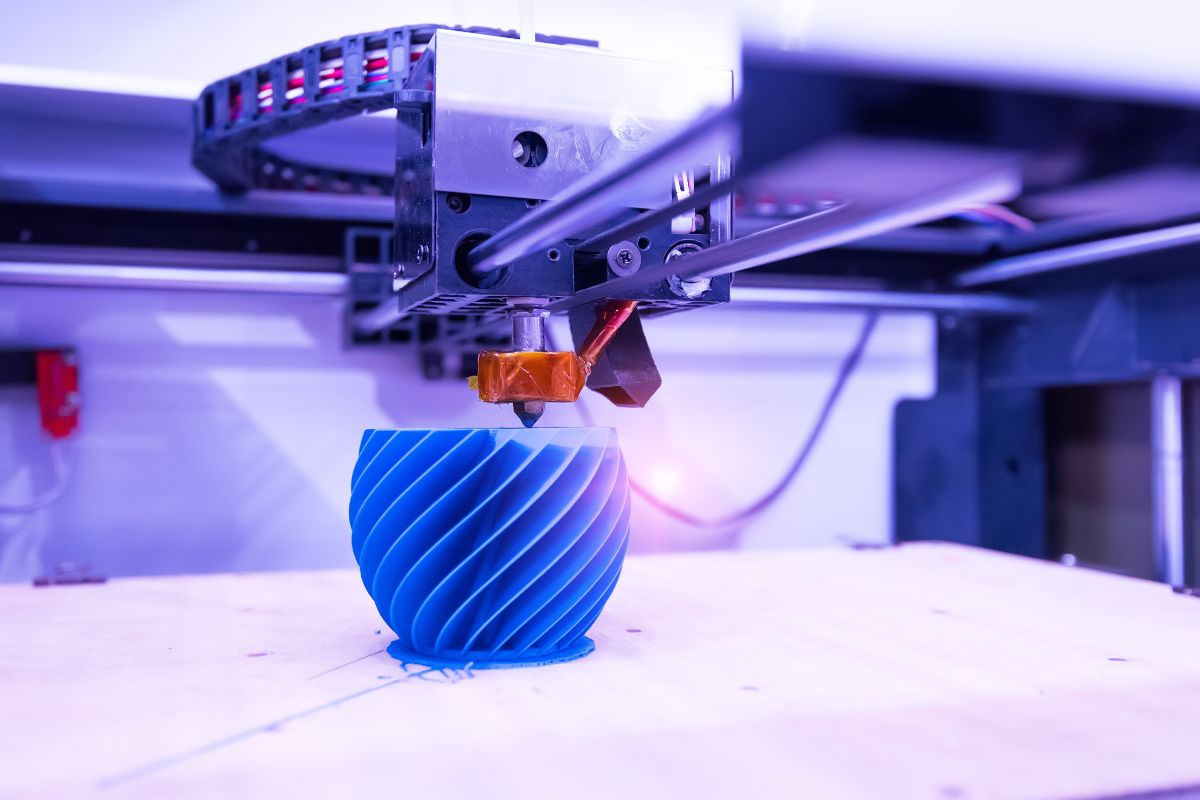Are 3D Printed Parts Waterproof?

3D printing, a technological marvel, has transformed multiple sectors by facilitating the quick prototyping and manufacturing of intricate designs. As this technology becomes increasingly integrated into fields such as engineering, medical, and consumer products, a common question arises: Are 3D-printed parts waterproof? Understanding the waterproof capabilities of 3D-printed components is essential for their application in moisture-exposed environments. This article explores the factors that affect the water-resistance of 3D printed components, the materials used, and the steps needed to ensure optimal performance in wet conditions.
Understanding 3D Printing Materials
Grasping the properties of 3D printing materials is essential for unlocking the full capabilities of 3D printing technology, especially when assessing their suitability in applications where water resistance is crucial. Below is an overview of some common 3D printing materials—PLA, ABS, PETG, and Nylon—and an examination of their water-resistant properties.
PLA (Polylactic Acid)
PLA has become a favored material for 3D printing because of its user-friendly nature, low cost, and eco-friendly properties, as it is derived from renewable resources like cornstarch. However, PLA is not inherently waterproof or even water-resistant. It can take in moisture from the air, potentially leading to degradation and compromising its structural integrity over time. For applications where moisture exposure is likely, PLA is generally not recommended unless modifications or protective coatings are applied.
ABS (Acrylonitrile Butadiene Styrene)
ABS is a petroleum-based plastic that is tougher and more impact-resistant than PLA. It is more appropriate for items that may be subjected to high temperatures and mechanical stress. In terms of water resistance, ABS performs better than PLA, as it does not absorb water easily and can withstand exposure to moisture without significant degradation. However, ABS can still be vulnerable to prolonged exposure unless properly sealed or treated.
PETG (Polyethylene Terephthalate Glycol)
PETG is a modified version of PET, enhanced with glycol to prevent crystallization and increase durability. It is highly favored for applications that require a good balance between ease of printing and functional strength. PETG offers superior water resistance compared to both PLA and ABS. It resists water absorption well, making it an ideal choice for outdoor applications or any situation where the part may be regularly exposed to moisture.
Nylon
Nylon is renowned for its strength, flexibility, and durability, making it a preferred material for functional parts that require significant mechanical performance. Among common 3D printing materials, Nylon offers the best water resistance. It does absorb some moisture, which can actually lead to an increase in flexibility and a decrease in brittleness. For high-performance parts that need to withstand moist environments, Nylon is often the best choice, though it is more challenging to print with than PLA or ABS.
Water Resistance Across Materials
The extent to which these materials can withstand water can differ based on various factors, including the specific blend of materials, the 3D printer’s settings, and the environment in which the printed parts are used or stored. Additionally, post-processing techniques such as coating with a waterproof sealant or chemically smoothing the surfaces can significantly enhance the water resistance of 3D printed objects.
When selecting a material for 3D printing, considering the environmental conditions to which the part will be exposed is crucial. For applications requiring water resistance, choosing a material like PETG or Nylon and employing appropriate post-processing methods can greatly extend the life and functionality of 3D-printed parts. Understanding these materials’ properties in relation to water resistance is essential for making informed decisions in the design and manufacturing process.
Factors Affecting The Waterproof Nature of 3D Printed Parts
The water resistance of a 3D-printed object depends not just on the material used but also on several other factors:
Layer Adhesion
Poor adhesion between layers can create micro-gaps that allow water penetration.
Print Settings
Higher infill percentages and finer layer resolutions can minimize gaps, enhancing water resistance.
Post-Processing Techniques
Methods such as epoxy coatings, varnish, or acetone vapor smoothing can seal the outer layer of prints, providing a waterproof barrier.
Testing Waterproof Capabilities
To determine if a 3D-printed part is truly waterproof, several testing methods can be employed:
Water Immersion Test
Submerging the part in water for a specified duration to check for leaks or degradation.
Pressure Test
Apply air or water pressure to ensure the part can hold without leaking. These tests help identify the effectiveness of the waterproofing measures and highlight any need for further enhancements.
Applications of Waterproof 3D Printed Parts
Waterproof 3D printed parts have transformed several industries by offering versatile, cost-effective solutions for environments where water exposure is inevitable. Below, we explore various sectors that benefit from these innovations, highlighting specific applications where the waterproof nature of 3D-printed components is crucial.
1. Marine Industry
Hull Components
Customized parts for boat hulls that require resistance to saltwater and harsh marine conditions.
Instrument Enclosures
Protective casings for marine instruments that must endure the wet marine environment without corroding or malfunctioning.
2. Outdoor And Sporting Equipment
Water Sports Gear
Items such as waterproof cases for cameras and sensors used in surfing, scuba diving, and other water-related sports.
Camping Gear
Durable and water-resistant components like fasteners, hooks, and protective housings for electronic devices used in camping.
3. Automotive Industry
Exterior Components
Parts exposed to the elements, such as water-resistant covers for sensors and electrical components.
Undercarriage Parts
Components that must resist road spray and puddle splashes, protect sensitive mechanical systems.
4. Construction And Infrastructure
Outdoor Lighting Fixtures
Light casings that require resistance to rain and moisture to prevent electrical failures.
Drainage Systems
Customized fittings and connectors that are often exposed to water and must prevent leaks.
5. Consumer Electronics
Protective Cases
Waterproof enclosures for smartphones, tablets, and other portable electronics that protect against accidental water exposure.
Outdoor Devices
Components for devices meant for outdoor use, like weather stations or outdoor Wi-Fi routers, need to be resilient against weather variations.
6. Healthcare
Prosthetics And Orthotics
Water-resistant prosthetic limbs and orthotic devices that allow users to engage in activities involving water without damaging the equipment.
Medical Device Housings
Enclosures for medical devices that must be protected from spills or sterilization processes involving fluids.
7. Emergency And Safety Equipment
Water Rescue Devices
Parts for life-saving equipment used in water rescue operations, which must float and be durable in wet conditions.
Protective Gear
Equipment used by first responders that requires integration of waterproof components to maintain functionality in all weather conditions. The use of waterproof 3D printed parts in these applications not only enhances the performance and longevity of products but also allows for the rapid production and customization of parts at a reduced cost. This capability is particularly beneficial in fields requiring quick iterations or customized solutions tailored to specific environmental conditions. As 3D printing technology progresses, its integration into these essential areas is anticipated to increase, pushing the boundaries of innovation and efficiency in industries worldwide.
Final Thought
While many 3D-printed parts possess some degree of water resistance, achieving true waterproofing involves careful consideration of materials, printing techniques, and post-processing. As technology advances, the capabilities of 3D printed components to withstand water exposure are expected to improve, broadening their applications in wet environments.
For those interested in utilizing 3D printing for waterproof applications, it is advisable to consult with material specialists and leverage advanced printing and finishing techniques. Exploring these options can maximize the performance and durability of 3D-printed parts in any water-involved application. To further enhance your project, consider engaging with a specialized 3D printing service. These services can provide expert guidance and access to state-of-the-art technology specifically suited for creating durable, waterproof parts.













